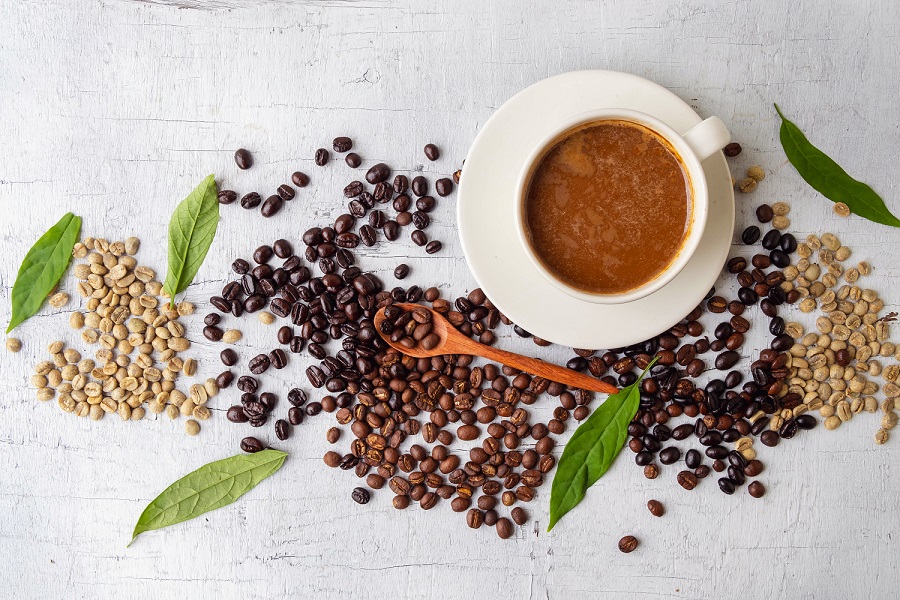 The key to aromatic and pleasant-tasting coffee is the high-quality roasting of beans. During this process, coffee beans not only evaporate excess moisture, but also a lot of various chemical processes make your coffee great. For example, caffeine released under the influence of high temperatures emphasizes such our favourite flavour of the drink and caramelized in the process of steaming grains sucrose gives coffee its characteristic brown colour.
The key to aromatic and pleasant-tasting coffee is the high-quality roasting of beans. During this process, coffee beans not only evaporate excess moisture, but also a lot of various chemical processes make your coffee great. For example, caffeine released under the influence of high temperatures emphasizes such our favourite flavour of the drink and caramelized in the process of steaming grains sucrose gives coffee its characteristic brown colour.The strength of the drink depends on how it is prepared. Here, not only the degree and the roasting method used in the preparation of grains, but also many other factors - such as country of origin, growing conditions and environmental influences.
It is customary to distinguish between 10 different degrees of coffee roasting, which can be conditionally divided into light, medium and dark. It is the roasting factor that most influences taste and saturation of the future drink and gives it special nuances in taste and aroma.
First stage of roasting – cinnamon roasting
When roasting coffee beans for a short time at a low temperature of 195°C, they acquire a sour, mild, light yeast aroma which reminds of the smell of fresh bread. During the short roasting time, the coffee beans do not manage to release all the aromatic oils, so the coffee beans of this roast have a refreshing acidity. Beans from Kenya, Nicaragua and Ethiopia are most often roasted this way.
Second degree of roasting – New England roasting
To obtain the coffee of this roast, the beans need to be roasted at a temperature of 205°C until they begin to crack, and the aromatic oils are released. Starch and saccharides are formed during this roasting process. Coffee roasted in this way is light brown in colour, has no expressive colour, but has a richer taste and aroma than coffee roasted at a lower temperature.
Third degree of roasting – American roasting
Roasting coffee beans at 210°C until the first cracks appear, then cooling them rapidly and then continuing roasting, the coffee beans become mottled, have a reddish hue, and show distinct cracks. The aroma is expressive, and the taste is sour.
Fourth Degree of Roasting – City Roasting
When roasting coffee beans at a temperature of 220°C until cracks appear again, the coffee acquires a harmonious balance of sour and bitter taste, the natural sweetness of the coffee beans is also highlighted due to active caramelization and release of sugar. During the roasting process, the coffee beans become mottled, spotted, and oil drops are visible on them. Coffee roasted in this way has a rich colour and a strong aroma with nuances of nutty taste.
Fifth degree of roasting – Velvet roasting
Such roasting performed at 225°C until the beans turn dark and their burning oils give off bluish smoke is also known as Velvet and French light roasting. As a result, the coffee acquires a strong bitter taste with sweet caramel nuances and light acidity and is also strongly aromatic.
Sixth degree of roasting – Vienna roasting
As a result of roasting coffee beans at a temperature of 230°C, they acquire medium dark brown colour and become oily. They have a strong taste, sweet-bitter caramel taste, rich, but without acidity. The aftertaste of Arabica and Robusta coffee beans roasted in this way bears notes of cinnamon, nutmeg, mango and honey.
Seventh degree of roasting – French roasting
When coffee beans are roasted at 240°C, they lose a large amount of water and ⅕ of their total weight, resulting in a full-bodied coffee with a strong flavour.
Eighth degree of roasting – Turkish roasting
When roasting at a temperature of 245°C, the coffee beans crack twice, resulting in coffee with a strong aroma. If at first the coffee roasted in this way seems a little bitter, it is strong and has a slight burning taste, then in the aftertaste there are also notes of sweet caramel taste.
Ninth degree of roasting – Italian Espresso roasting
Espresso coffee bean blends are best roasted at 245°C, followed by cooling the beans with flow of compressed air, which intensifies the flavour of coffee and reveals new flavour nuances.
Tenth degree of roasting - Spanish roasting
The most complex coffee processing is tenth degree roasting at 250°C, which gives the coffee beans an oily surface and a dark, almost black colour to the drink. Making such coffee is an art - the beans may not be over-roasted during the roasting process, because then they burn and turn into ashes.
What roast of coffee to choose?
Each type of roasting of coffee beans allows you to reveal different flavour nuances of the drink. For this reason, the choice of processing method should be based solely on your taste preferences. The softer, lighter the roast, the stronger sourness will appear in the drink. In turn, dark-processed coffee is richer, so it is better to enjoy it without milk and with a little sugar. If your favourite drinks include cappuccino, latte and macchiato, for their preparation, we recommend choosing a medium roasted coffee.
In the wide range of coffee offered by VENDEN, you can always find variety which is the most suitable for you. Browse our catalogue and order your favourite coffee beans with free delivery to the office or home!
Enjoy!